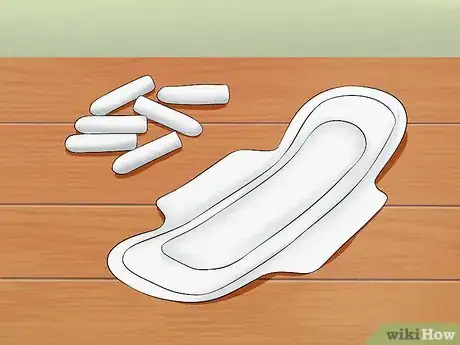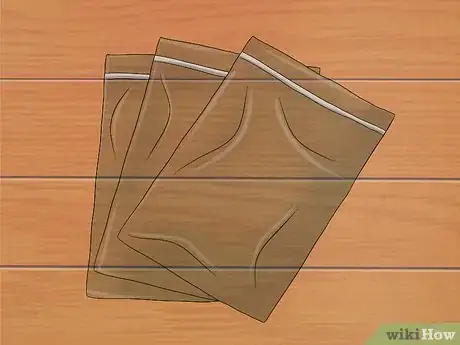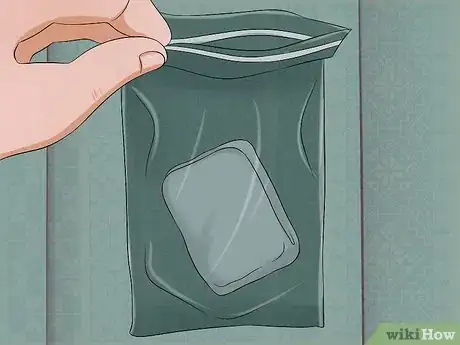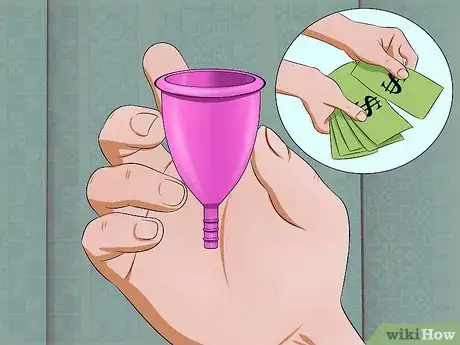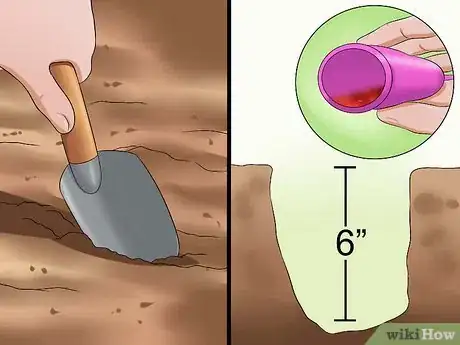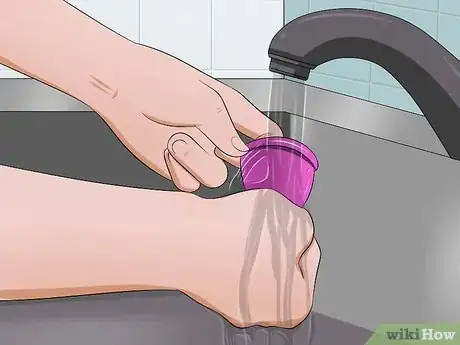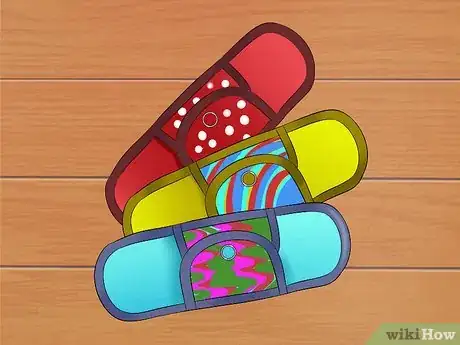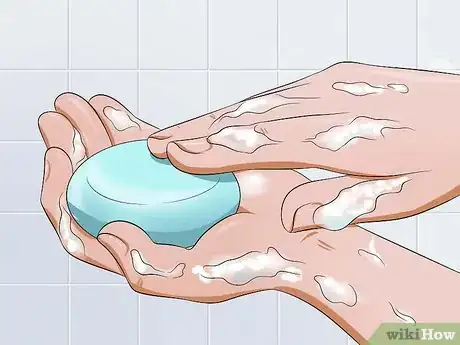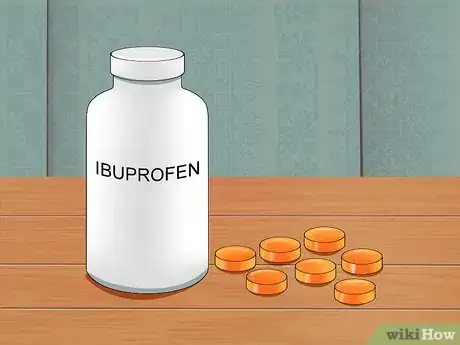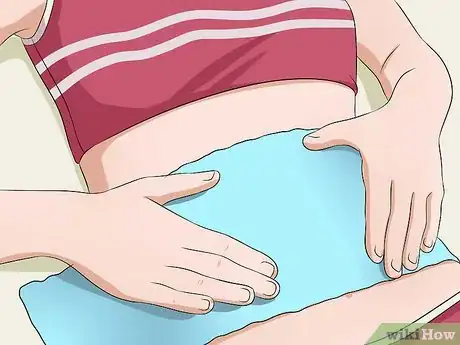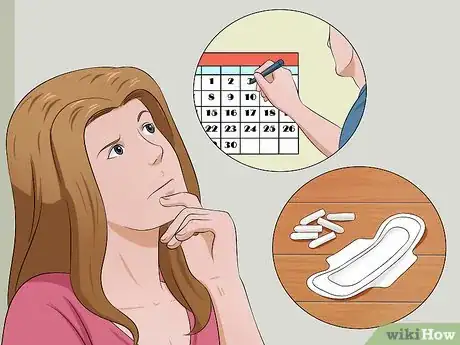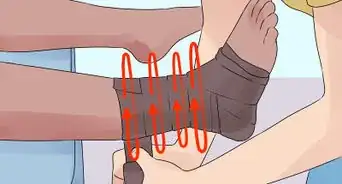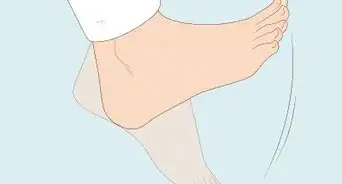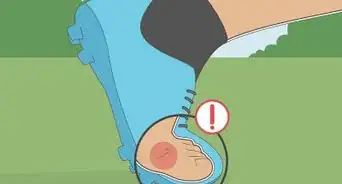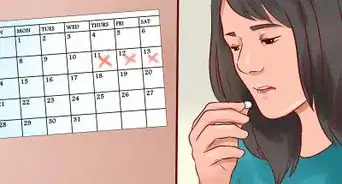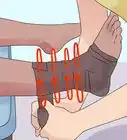wikiHow is a “wiki,” similar to Wikipedia, which means that many of our articles are co-written by multiple authors. To create this article, 15 people, some anonymous, worked to edit and improve it over time.
wikiHow marks an article as reader-approved once it receives enough positive feedback. In this case, several readers have written to tell us that this article was helpful to them, earning it our reader-approved status.
This article has been viewed 155,935 times.
Learn more...
Having your period while camping might sound like a messy and uncomfortable experience. Fortunately, you can use a variety of tactics to stay clean, healthy, and enjoy your outdoor excursion, whether you're car camping in one location or backpacking through the wilderness. Whatever your plans, having your period need not ruin your camping fun.
Steps
Using Tampons or Pads
-
1Choose smaller tampons and thinner pads when possible. While women's menstrual flows vary, select the most streamlined products that will work for you. You'll save space packing and generate a smaller volume of trash.[1]
- Consider using non-applicator tampons. Non-applicator tampons take up far less storage space. Instead of a bulky applicator, the only extra waste involved is a small cellophane wrapper. Practice using this style of tampon prior to your trip so you feel confident using them.[2]
- Recognize that if you're backpacking, you'll need to pack carefully and consider leaving an item or two of your usual gear at home to make room for sanitary supplies.[3]
- Use unscented, unbleached products both to deter wildlife and to keep yourself healthy. Toxic shock syndrome and other infections can occur when chemicals used in manufacturing alter your body's natural pH.[4]
-
2Bring lots of zippered plastic storage bags and stay organized. Place unused tampons or pads in one storage bag. Stow used items and toilet paper in smaller bags, then consolidate into one larger "trash" bag. Freezer bags are especially good for this purpose as they are manufactured from thicker, more durable plastic.
- Store used materials away from food when possible, but remember that these items are now "scented." Scientists have determined that myths about bears being especially attracted to menstrual blood are false. You need not worry that bears will be more interested in your used sanitary items than in any other scented item you might be carrying.[5] That said, it's a good idea to hang used products with or alongside food in a bear bag or use a bear canister. Double-bagging your waste in plastic will help you maintain good hygiene.[6]
- If you dislike using disposable zippered plastic bags, consider investing in a dry-bag such as those used by cloth-diapering parents. These washable lined bags function similarly to a zippered plastic bag.
Advertisement -
3Pack out your used tampons or pads. Never bury your used products or place them in composting toilets. Store your waste and carry it home with you if proper trash receptacles are not available.
Using a Menstrual Cup
-
1Purchase a properly sized menstrual cup. Menstrual cups are made of silicone formed into a cup with holes around the rim and a small stem. Because they are reusable you won't need to pack around extra supplies or waste. Different brands are sized differently, but generally fall into the categories of small and large, or pre- and post-pregnancy. Wash your cup with unscented soap and water, then practice inserting the cup per package directions.
- Note you can insert your menstrual cup before your period begins to avoid surprise bleeding.[7]
- Menstrual cups are safe to use while sleeping, eliminating the need for potentially bulky pads.
- Cups may be used for up to 10-12 hours at a stretch, making them a useful option on long hikes.
-
2Dispose of the blood collected in your cup in a 6-8 inch deep "cat hole." Be careful to bury waste at least 200 feet from your camp, the trail, and any water sources to avoid contamination. Alternatively, if you are car camping or staying in a location with a composting toilet, the waste from your cup may simply be poured down the toilet.[8]
-
3
Employing Other Reusable Options
-
1Purchase a sea sponge. Natural sea sponges can work like disposable tampons. Clean sponges intended for this purpose are sold through various health supply stores. Cut the sponge to size and then insert like a tampon. Rinse the sponge daily. This solution is slightly messier than using a menstrual cup but is an all-natural, reusable product. Like menstrual cups, sea sponges are safe to use while sleeping.[11]
-
2Invest in reusable pads made from thick flannel. These are typically sold as "moon pads" and are especially good for nighttime use. Reusable pads are easily washed, dried, and reworn, eliminating waste on the trail, although you will need to use a zippered plastic bag or other solution to store soiled pads between washes. They also take up space in a pack, so consider your weight and space requirements carefully if you're planning to use reusable pads on a backpacking excursion.[12]
-
3Ensure your hands are clean before and after using any product. This advice applies to both reusable and disposable products, but hygiene becomes especially significant when you are washing and reusing the same equipment multiple times. Washing before you use a product is just as important as cleaning your hands afterward. Doing so keeps bacteria away from this sensitive region of your body. Urinary tract infections and yeast infections are never fun, but they're especially important to avoid when you're out camping and away from medical help.[13]
Coping with Discomfort
-
1Pack pain relief medication. Be sure to bring ibuprofen, acetaminophen, aspirin or naproxen on your trip. You'll be prepared to treat any cramps you might experience and continue to enjoy your camping excursion. Remember that pain relief medication works most efficiently when it does not need to "catch up" to the pain. If you regularly experience menstrual cramping, plan a dosage schedule to ensure your cramps are continuously treated.[14]
-
2Drink plenty of fluids. Dehydration can increase menstrual pain. If you're taking pain relief medication, you'll need sufficient water both to ensure the medicine works properly and to dilute it so your stomach does not become upset.
-
3Apply warmth to your lower back or abdomen. A hot water bottle is ideal, but a heated towel can provide similar pain relief if you're having cramps. Consider boiling a towel and wrapping it in another towel or a bag to soothe and warm your aching muscles.
-
4Wear darker colored pants or shorts. Darker clothing is less likely to show evidence of spotting and will help you feel more confident about camping while on your period. If spotting does occur, it is easier to rinse minor stains out of dark clothing than to eliminate spots on light fabric.
- Consider packing an on-the-go stain remover. These products require little or no water and can remove minor stains.
-
5Remember that exertion may impact the predictability of your monthly cycle.[15] Prepare for surprises -- pack extra supplies or bring along your reusable product so you aren't caught off-guard if your period comes early.
References
- ↑ https://lnt.org/sites/default/files/Considerations_for_Women.pdf
- ↑ http://appalachiantrail.com/advice/how-to-deal-with-your-period-on-the-appalachian-trail/
- ↑ http://hikinglady.com/hiking/this-one-is-for-the-girls/
- ↑ http://appalachiantrail.com/advice/how-to-deal-with-your-period-on-the-appalachian-trail/
- ↑ http://www.bearstudy.org/website/images/stories/Publications/Reactions_of_Black_Bears_to_Human_Menstrual_Odors.pdf
- ↑ http://hikinglady.com/hiking/this-one-is-for-the-girls/
- ↑ http://hikinglady.com/hiking/this-one-is-for-the-girls/
- ↑ https://lnt.org/sites/default/files/Considerations_for_Women.pdf
- ↑ http://hikinglady.com/hiking/this-one-is-for-the-girls/
- ↑ http://appalachiantrail.com/advice/how-to-deal-with-your-period-on-the-appalachian-trail/
- ↑ http://appalachiantrail.com/advice/how-to-deal-with-your-period-on-the-appalachian-trail/
- ↑ http://appalachiantrail.com/advice/how-to-deal-with-your-period-on-the-appalachian-trail/
- ↑ http://appalachiantrail.com/advice/how-to-deal-with-your-period-on-the-appalachian-trail/
- ↑ http://www.webmd.com/women/menstrual-cramps?page=2
- ↑ https://lnt.org/sites/default/files/Considerations_for_Women.pdf
About This Article
Having your period while you’re camping can be difficult, but you can make it easier to deal with by keeping yourself clean and as comfortable as possible. Bring smaller tampons and thinner pads if possible since they'll take up less space and be more discreet. You should also bring lots of zippered plastic bags so you can store used tampons or pads in them until you can get to a trash can. Don't forget to pack pain relief medication, like ibuprofen or naproxen, so cramps don't get in the way of having fun. Wear darker colored pants or shorts while you're camping so any spotting is less likely to show. You can even pack an on-the-go stain remover just in case. For tips about how to use reusable pads to deal with your period while you’re camping, keep reading.
